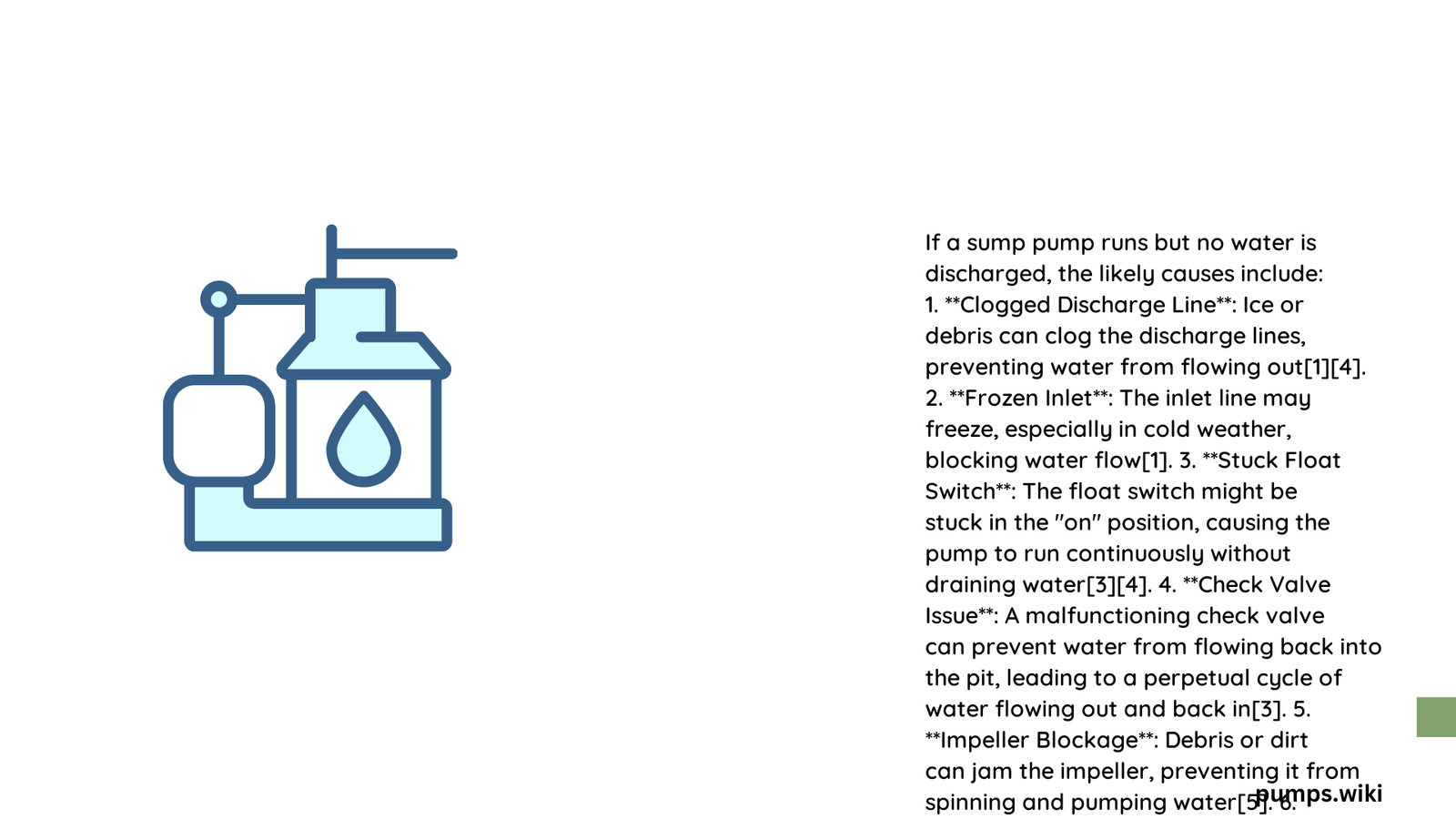When a sump pump operates without discharging water, homeowners face a potentially serious drainage problem that could lead to basement flooding. This scenario indicates a mechanical or systemic failure within the pump system, requiring immediate diagnostic attention to prevent water damage and ensure proper basement moisture control. Understanding the root causes and implementing strategic troubleshooting can help resolve this critical issue efficiently.
What Causes Sump Pump to Run Without Water Discharge?
Can Check Valve Malfunction Prevent Water Movement?
Check valves play a crucial role in preventing water backflow and ensuring proper discharge. When malfunctioning, they can completely halt water movement through the system.
Key Check Valve Diagnostic Indicators:
- Visible signs of corrosion
- Debris accumulation
- Improper installation angle
- Mechanical wear and tear
How Do Impeller Problems Impact Pump Performance?
The impeller represents the heart of water movement in a sump pump. Its condition directly influences discharge capabilities.
| Impeller Issue | Potential Impact | Diagnostic Method |
|---|---|---|
| Debris Blockage | 50-75% Reduced Flow | Visual Inspection |
| Mechanical Wear | Complete Discharge Failure | Rotation Test |
| Sediment Accumulation | Intermittent Performance | Cleaning Assessment |
What Electrical Factors Contribute to Discharge Failure?
Electrical components significantly influence sump pump functionality. Several factors can interrupt water discharge:
- Voltage Inconsistencies
- Verify consistent 120V power supply
- Check circuit breaker functionality
-
Inspect electrical connections
-
Motor Wattage Limitations
- Confirm motor meets discharge requirements
- Evaluate pump horsepower relative to basement water volume
- Consider potential motor degradation
Can Pipe Configuration Obstruct Water Movement?
Discharge pipe design plays a critical role in water removal efficiency.
Potential Pipe-Related Restrictions:
- Incorrect pipe diameter
- Sharp angle bends
- Insufficient slope
- Potential freezing in external sections
What Maintenance Practices Prevent Discharge Issues?
Proactive maintenance can significantly reduce sump pump discharge problems:
- Annual Professional Inspection
- Regular pit cleaning
- Debris removal from impeller
- Lubrication of moving components
- Float switch verification
How to Diagnose Specific Discharge Problems?
Diagnostic Flowchart:
- Verify power supply
- Inspect check valve
- Examine impeller condition
- Test float switch mechanism
- Evaluate discharge pipe configuration
When Should Professional Intervention Be Considered?
| Complexity Level | Recommended Action |
|---|---|
| Minor Issues | DIY Troubleshooting |
| Moderate Complexity | Professional Consultation |
| Advanced Problems | Complete System Replacement |
Cost Considerations for Repair
- Check Valve Replacement: $20-$50
- Impeller Repair: $30-$70
- Professional Service Call: $100-$300
- Complete Pump Replacement: $200-$500
Final Recommendations

Addressing sump pump discharge issues requires systematic approach, technical understanding, and sometimes professional expertise. Regular maintenance, proactive diagnostics, and timely interventions can prevent potential water damage and ensure reliable basement moisture management.
